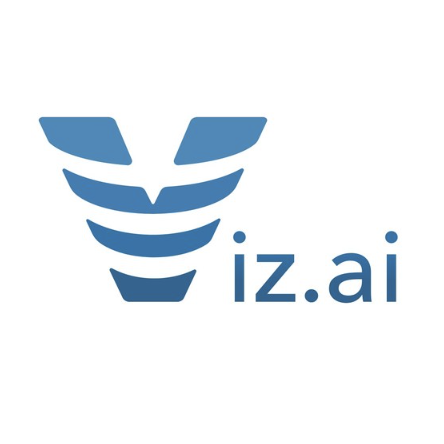Common stock is a fundamental component of startup equity structures and it’s the most common type of ownership founders and employees have at most startups.
As a startup grows and raises venture capital funding, understanding the nuances of common stock becomes increasingly important for all stakeholders involved.
What Is Common Stock?
Common stock, also known as common equity, is a basic form of equity ownership in a startup.
Basically, it’s the most basic form of ownership! It’s typically issued to founders and early employees, and sometimes to employees through option grants.
Common stockholders have the following rights:
- Voting: They can vote on certain company matters, such as the board of directors
- Dividends: They may receive a portion of the company’s profits in the form of dividends
- Liquidation rights: They can claim company assets if the company liquidates or goes bankrupt
However, common stockholders also have some disadvantages:
- Priority: Last in line! They usually have the lowest priority when it comes to receiving dividends and other distributions, and they’re usually last in line for assets in a liquidation
- No Preference: Similar to the lack of priority, common stockholders are going to be paid out last if a company exits for less than its preference stack - which is typically how much money VCs have invested; well explain this better in a moment
- Profit: Companies often generate little to no profit in the early stages, so shareholders may not receive dividends
Investors are going to purchase preferred stock, which is, quite frankly, a lot better of an instrument. They will get voting rights, information rights, as a class will likely have the ability to block certain transactions, will get paid back first if things go south… basically, it is better all around. Except the VCs have to pay a lot for it, (although exercising options, which turn into common, is sometimes pretty expensive too.)
Common Stock vs. Preferred Shares in Startup Investing
In the world of startup investing, the distinction between common stock and preferred shares is crucial.
While both types of shares represent ownership in the company, they come with different rights and privileges that can significantly impact the holder’s position in various scenarios. You can read our article on common vs preferred here, or below is a tldr version:
Common Stock: The Foundation of Startup Ownership
Common stock is typically held by founders, employees, and sometimes early-stage investors. It represents the most basic form of ownership in a company. Founders and early employees usually receive common stock as part of their initial compensation package or through stock option plans.
Key characteristics of common stock include:
- Voting rights: Common stockholders can participate in major company decisions through voting.
- Potential for high returns: If the company succeeds, common stock can appreciate significantly in value.
- Lower priority in liquidation: Common stockholders are last in line to receive assets if the company is liquidated.
Preferred Shares: The Investor’s Choice
Preferred shares are typically issued to venture capital investors and come with additional rights and protections. These shares are called “preferred” because they often have preferential treatment over common stock in certain situations.
Key features of preferred shares include:
- Liquidation preference: Preferred shareholders often have the right to receive their investment back before common stockholders receive anything in a liquidation event.
- Conversion rights: Many preferred shares can be converted into common stock, usually at the time of an IPO or acquisition.
- Anti-dilution protection: This feature helps protect investors from dilution in future funding rounds.
- Dividend rights: Preferred shareholders may have priority in receiving dividends, if any are declared.
Note that at an IPO, preferred shares usually automatically convert into common stock. However, in most M&A situations the investors will have the option to choose to convert or to keep their preferred, meaning they are going to opt for getting paid either in their share of ownership, or get their preference back.
Accounting for the Issuance of Common Stock
When a startup issues common stock, it’s essential to account for this transaction properly, so we suggest always having an experienced startup CPA working with you (and, of course, work with great lawyers as well!).
The accounting treatment for equity and fundraising can significantly impact a startup's balance sheet. Here are some key points to consider:
Recognition and Valuation
Common stock should be recognized on its settlement date, which is typically the date when the proceeds are received and the shares are issued. The stock is generally recorded at its fair value, which is usually the amount of proceeds received.
Allocation of Proceeds
When recording the issuance of common stock, the proceeds are allocated as follows:
- Par value: First, the par value of the shares (if any) is recorded.
- Additional paid-in capital: Any excess over par value is allocated to additional paid-in capital.
Estimating the Fair Value of Common Stock
Determining the fair value of common stock can be challenging, especially for startups that are not publicly traded. However, accurate valuation is crucial for various reasons, including:
- Issuing stock options to employees
- Complying with accounting standards
- Preparing for future funding rounds or exit events
ASC 820 and Fair Value Measurement
When estimating the fair value of common stock, companies should follow the guidance in ASC 820, Fair Value Measurement. The startup will hire a licensed 490a valuation provider, and they will use a variety of methods to come up with the company’s common stock price (which will be a lot less than the preferred share price). This standard provides a framework for measuring fair value and requires companies to consider various factors, including:
- The company’s financial condition and operating results
- The rights and preferences of the common stock
- Market conditions and industry trends
- Recent transactions involving the company’s stock
Common Stock Issuance Costs
When issuing common stock, companies incur various costs that need to be accounted for properly. These costs typically include:
- Legal fees
- Accounting fees
- Fees paid to bankers or underwriters (startups won’t have this usually!!)
- Other third-party expenses
It’s important to note that certain period costs, such as management salaries or general administrative expenses, are not considered issuance costs.
Accounting Treatment of Issuance Costs
According to SAB Topic 5.A, common stock issuance costs are generally recorded as a reduction of the share proceeds. This means that the net proceeds from the stock issuance are reduced by the amount of these costs.
For proposed or actual offerings, specific incremental costs directly attributable to the offering may be deferred and charged against the gross proceeds of the offering. However, if an offering is aborted or postponed for more than 90 days, these deferred costs cannot be charged against the proceeds of a subsequent offering.
The Role of Common Stock in Startup Growth and Exit Strategies
As startups progress through various stages of growth and funding, the role and value of common stock evolve.
Understanding this progression is crucial for founders, employees, and investors alike.
Early-Stage Considerations
When a startup first gets going, the founders usually get common stock. It’s crucial to file an 83(b) election with the IRS to lock in this low price for tax purposes. Sometimes founders will sell common as what is called a secondary; so get your tax basis all buttoned up right away.
The Convergence of Common and Preferred Stock
As a startup approaches a liquidity event, such as an IPO or acquisition, an interesting phenomenon occurs: the value of common stock and preferred shares begins to converge. This convergence happens because:
- The company’s success reduces the risk for all shareholders.
- The likelihood of preferred shareholders exercising their special rights (like liquidation preferences) decreases.
- Many preferred shares automatically convert to common stock upon an IPO.
IPO and Common Stock
During an Initial Public Offering (IPO), several important changes occur with regard to common stock:
- Preferred shares typically convert to common stock.
- All shareholders now own the same class of stock.
- The stock becomes publicly traded, providing liquidity for all shareholders.
This event often represents a significant win for common stockholders, who have held their shares at a lower valuation throughout the company’s growth stages.
Common Stock as a Tool for Recruiting and Retention
One of the most powerful uses of common stock in startups is as a tool for attracting and retaining top talent.
Read our guide on setting up an employee stock option plan. And, of course, you’ll need a cap table software to keep track of who owns which options.
Here’s how it works:
- Stock option pools: Companies set aside a portion of their common stock for employee stock options.
- Vesting schedules: Options typically vest over time, incentivizing employees to stay with the company long-term.
- Upside potential: The potential for significant financial gain if the company succeeds can be a powerful motivator for employees.
Founder Preferred Stock: A Special Case
In some cases, founders may be issued a special class of stock known as founder preferred stock. This hybrid between common and preferred stock can provide founders with some of the protections typically reserved for investors while maintaining their alignment with other common stockholders.
Talk with your attorney about this to get the guidance you need; not all VCs appreciate this type of a capital structure.
Conclusion: The Importance of Understanding Common Stock
For startup founders, employees, and investors, having a solid grasp of common stock mechanics is crucial. It affects everything from company valuation and fundraising to employee compensation and exit strategies.
As your startup grows and evolves, the role and value of common stock will change. By staying informed about these changes and understanding the interplay between common stock and other forms of equity, you’ll be better equipped to make strategic decisions that benefit both your company and its stakeholders.

Remember, while common stock may start out as the “underdog” in the capital structure, it often ends up being the most valuable asset for those who held on through the company’s journey to success.








